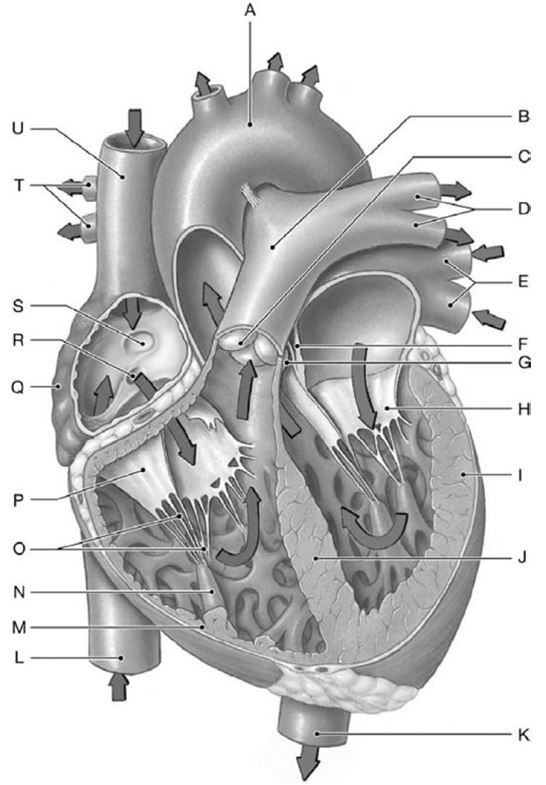The muscle seen most anteriorly on axial CT images of the neck is the platysma.
Answer the following statement true (T) or false (F)
True
Rationale: See the subsection “Muscles of the Neck” in the section “Muscles” and Figures 4-6 and 4-14.
You might also like to view...
Which of the following is incorrect pertaining to the inguinal ligament?
A) It is composed of the aponeurotic fibers of the external oblique muscle. B) It extends primarily between the anterior superior iliac spine and the pubic tubercle. C) It is often perforated by a direct inguinal hernia. D) It has fibers that cross the midline to help form the reflected inguinal ligament. E) It is paralleled deeply by the iliopubic tract, which is composed of transversalis fascia.
Each daughter cell resulting from mitotic cell division has the exactly same genetic composition
Indicate whether the statement is true or false
Label H represents the

A) cusps of the tricuspid valve.
B) pulmonary (semilunar) valve.
C) aortic (semilunar) valve.
D) cusps of the bicuspid valve.
E) cusps of the right atrioventricular valve.
A 21-year-old man receives a penetrat- ing knife wound in the abdomen and is injured in both the superior mesenteric artery and the vagus nerve. Which portion of the colon would most likely be impaired by this injury?
(A) Ascending and descending colons (B) Transverse and sigmoid colons (C) Descending and sigmoid colons (D) Ascending and transverse colons (E) Transverse and descending colons